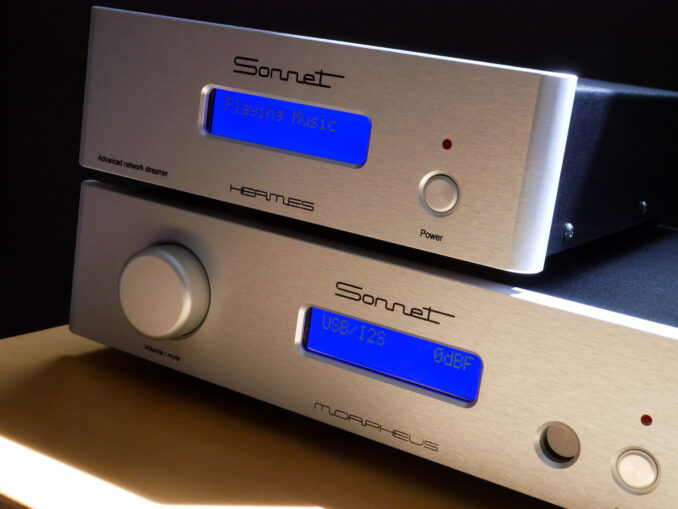
If you expect the Sonnet Morpheus DAC to sound a particular way because of acronyms associated with its design, be prepared for a surprise.
Anyone hanging around the digital water cooler for the past decade or so will know Cees Ruijtenberg from his days at the helm of Metrum Acoustics. I reviewed the Metrum Hex DAC way back in 2013, followed by reviews of the company’s Pavane and Musette DACs in 2015. Cees Ruijtenberg is also at the helm of Sonnet Digital Audio, and the Morpheus DAC can certainly be seen as a continuation of the Metrum path.
That path shares design choices that include a non-oversampling approach coupled with Cees-designed SDA-2 (Sonnet Digital Audio) R2R DAC modules. Each SDA-2 module contains an FPGA and four 16-bit resistor ladders. Hi-Res lovers fret not — the FPGA processes the incoming signal, essentially splitting 24-bit data into 12-bit streams, but everything gets put back together again before going on its way. The company claims this process keeps any switching noise, you can think of a ladder DAC as a series of switches keyed to a reference voltage, well below the music signal.
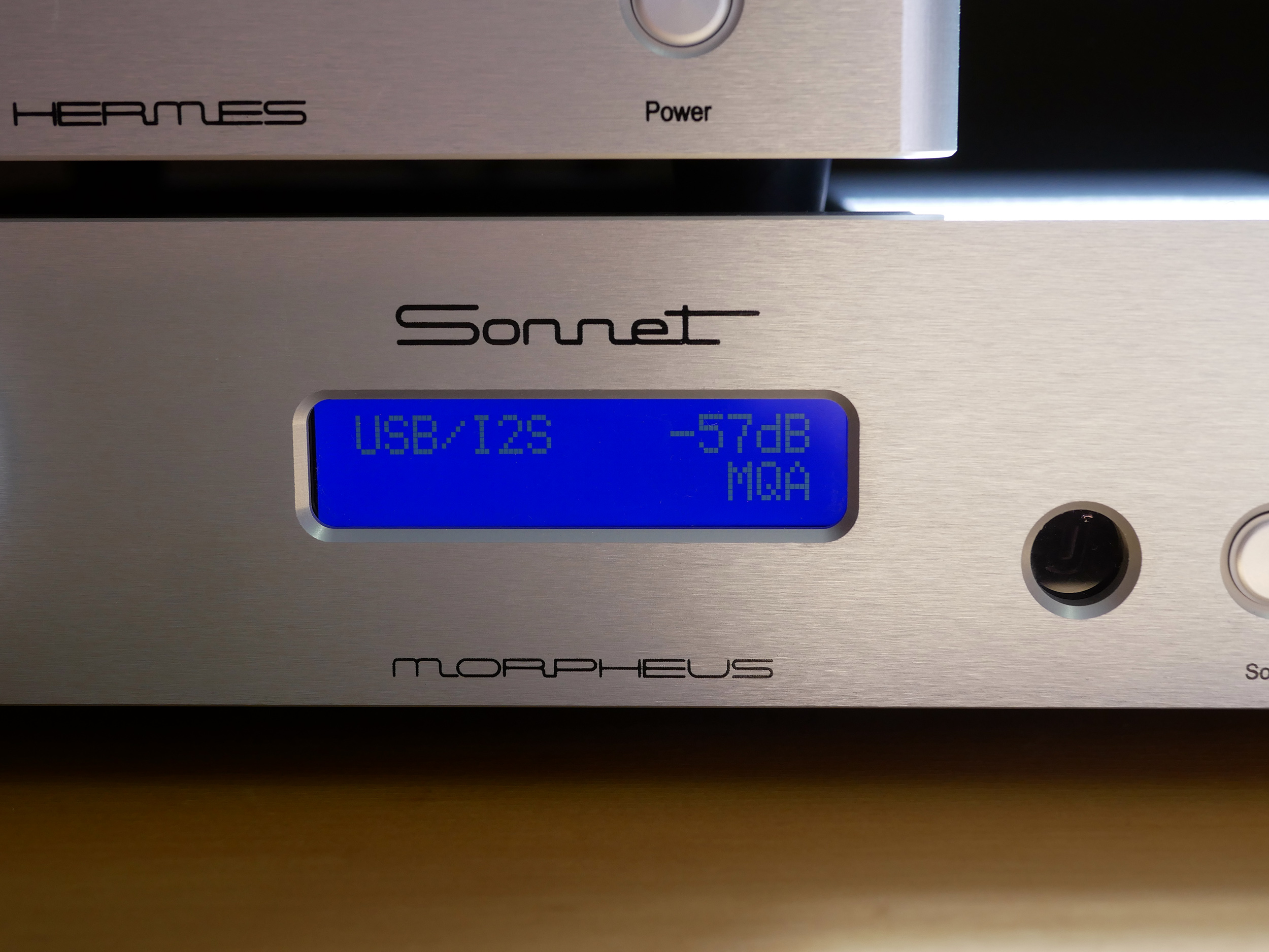
The Morpheus employs two SDA-2 DAC modules per channel, run in differential mode, for a total of 16 ladders. Morpheus offers fixed and variable output, the latter being somewhat unusual as it varies the reference voltage for the R2R ladders to generate the variable output, which comes directly off the SDA-2 modules to the single-ended RCA or balanced XLR outputs. This approach offers extremely high linearity, right down to -140 dB, which gives Morpheus a realistic 24-bit dynamic range according to the company.
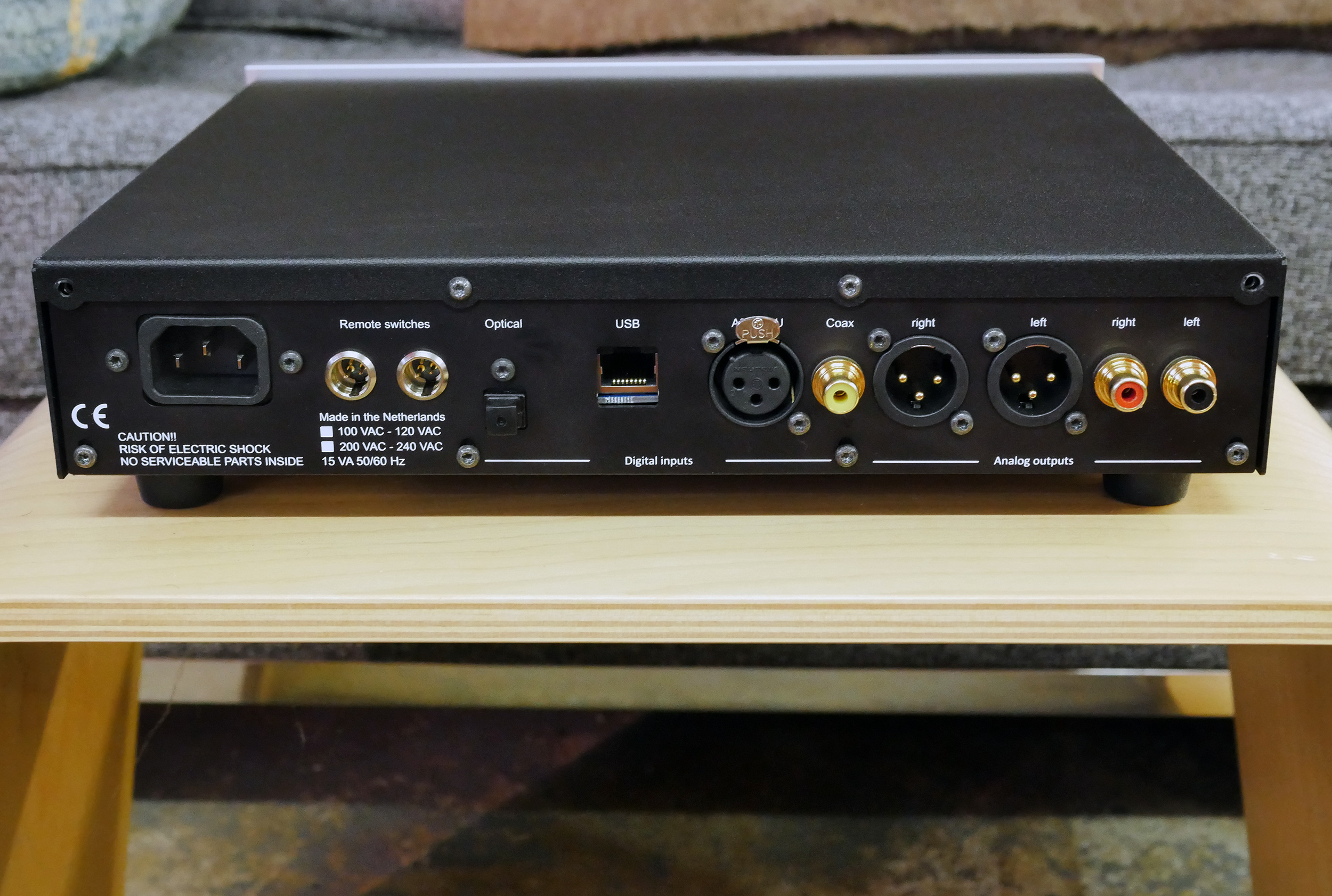
Inputs include Optical (96kHz max), Coax (192kHz max), AES/EBU (192kHz max), and your choice of either USB (384kHz max) or I2S over RJ45 (192kHz max). The review unit came equipped with I2S, for use with the Sonnet Hermes Streamer’s I2S output. There’s also an optional MQA board (+$199) and the review unit was so equipped. The back panel also houses an IEC inlet and a pair of 3-pole XLR mini connectors for controlling like-equipped power amplifiers with a single remote. Morpheus comes with a nice, hefty black aluminum remote.
The Morpheus stands a narrow 11 1/4” wide, 10” deep and 2 3/4” high and its black metal chassis is accented by a thickish silver or black aluminum front panel that houses a volume/ mute knob, display, and two buttons for source selection, power, and when combined, to tap through a number of setting options. These options include fixed or variable output, MQA, and display settings. In terms of look and feel, the Morpheus strikes me as standard fare of the kind of generic hifi product variety.
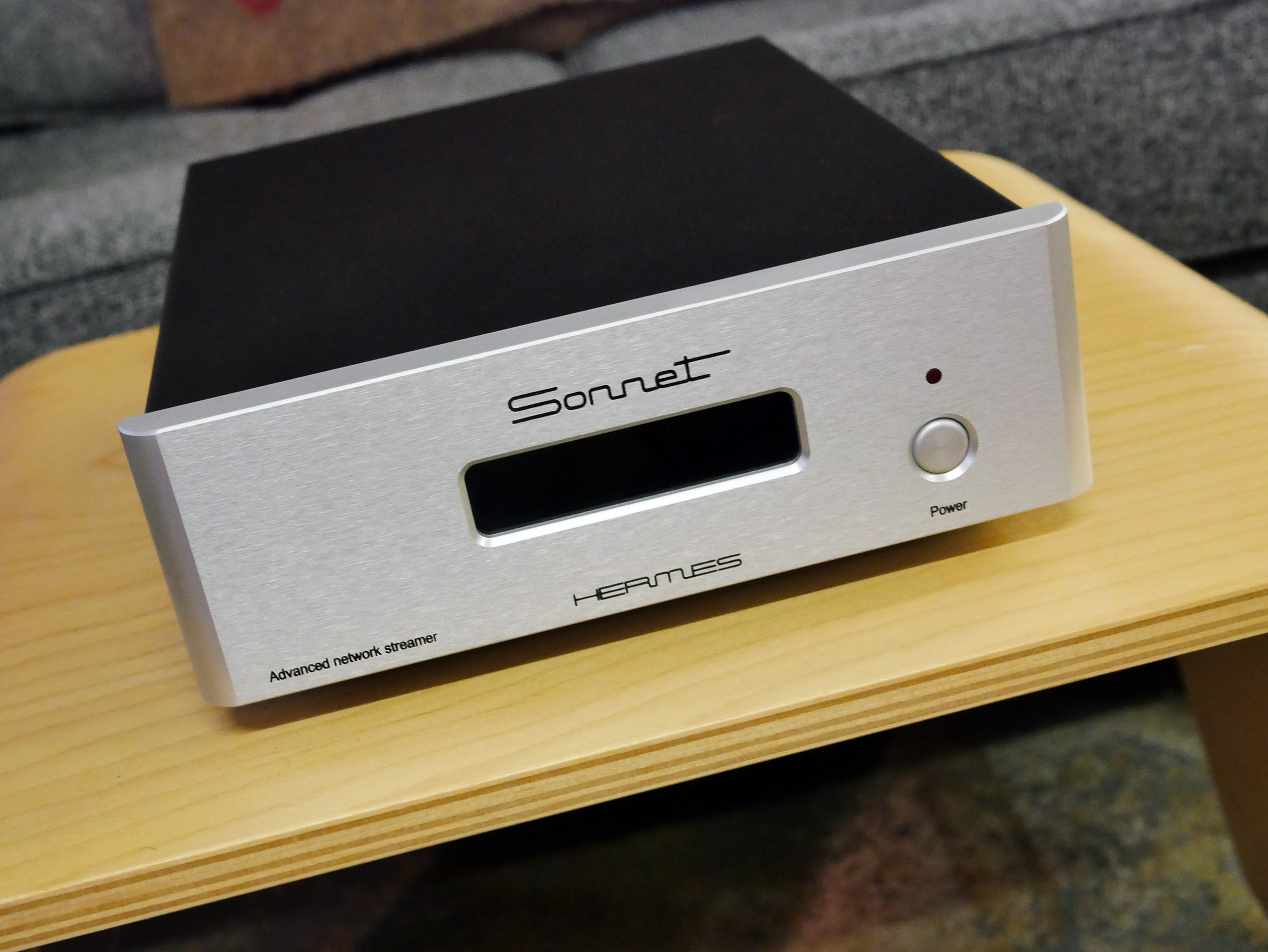
The smaller but matching Roon-Ready Hermes Network Streamer offers a wired-only 100 Mbps Ethernet input and Coax, Optical, AES/EBU, and I2S over RJ45 outputs. Hermes reclocks incoming data by running everything through a pair of precision clocks and is built on a Raspberry Pi 4 foundation, and users can access the back panel mounted microSD card that houses the Linux OS so adventurous owners can run other endpoint options like Volumio, Audirvana, or any UPnP solution (but why do that?).
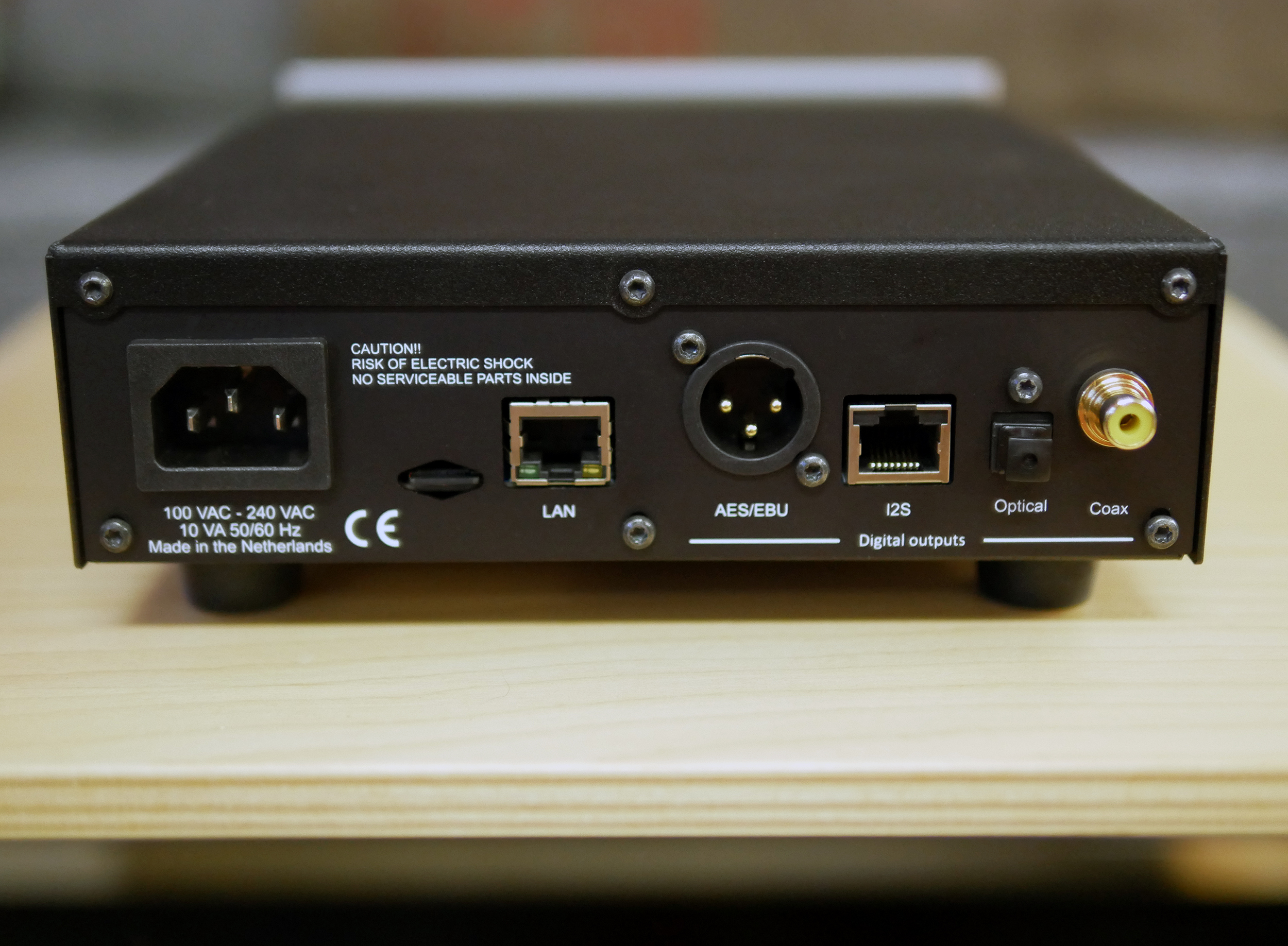
During its Barn stay, the Hermes and Morpheus saw playing time with the Marantz Model 30 Integrated Amplifier and Parasound JC 5 Stereo Power Amplifier driving the EgglestonWorks Oso (review) and Sonus Faber Olympica Nova III speakers. For the majority of my listening time, I used the Hermes / Morpheus combo connected with a length of included RJ45 cable. Remember, there is no standard pinout for I2S, so this is not a plug and play option if you decide to use another I2S capable streamer.
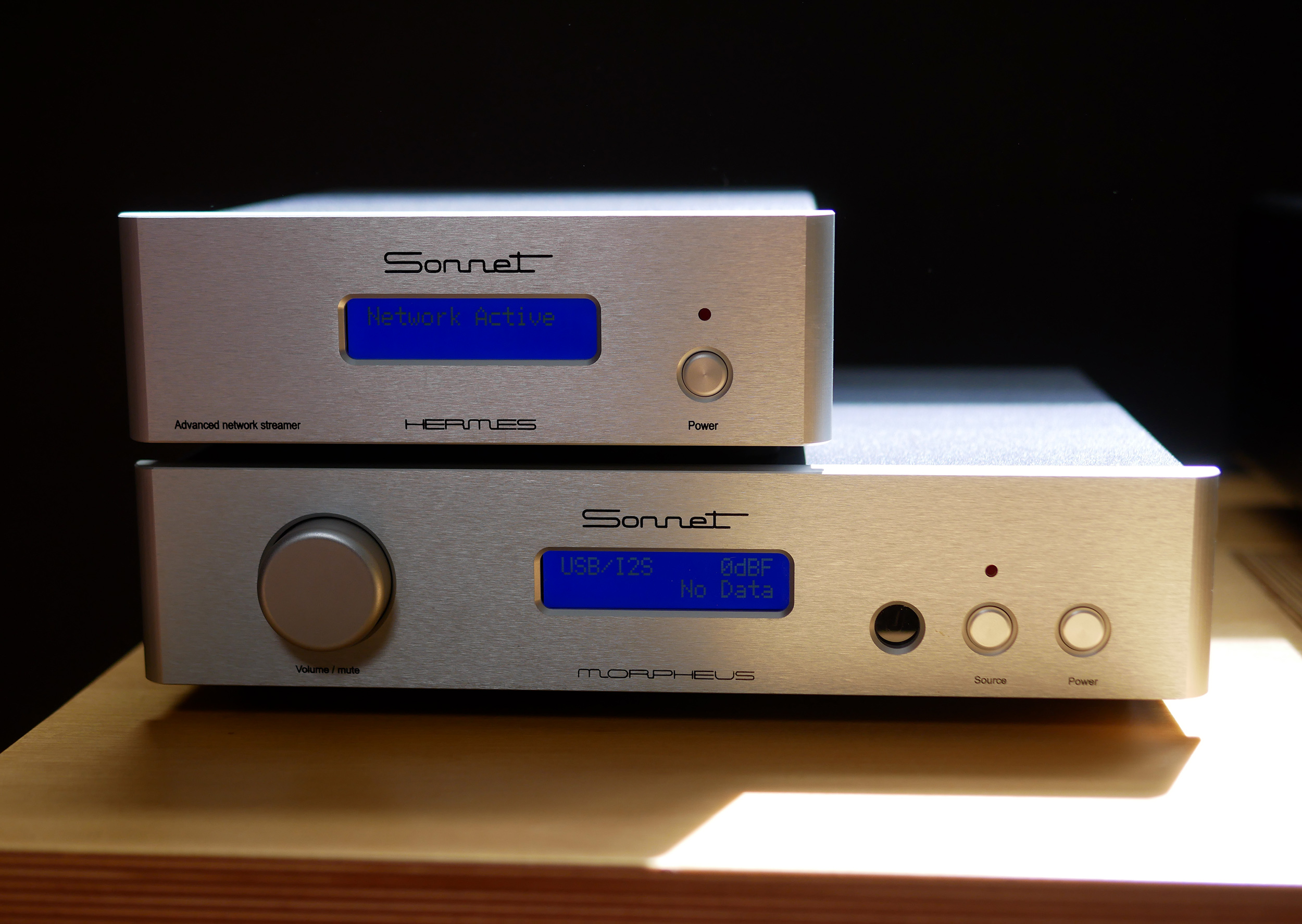
Dreamy
This review came about in large part because my friend, writer and reviewer Alex Halberstadt, asked me one day, “Have you heard the Sonnet Morpheus DAC?” Knowing Alex, his question already concluded, “you should”, even before our exchange went that way in the long run. “No? Well, you should.” I’ve had the pleasure of hanging out and listening to music on the hifi with Alex for many years, in a number of places, his, mine, and others, so I think it’s safe to say we know each other’s preferences pretty well. When Alex says you should I try my best to follow through.
My memory of the Metrum DACs I reviewed no longer contains specific sonic details. Rather, I remember how the different DACs made me feel when listening to music, or to be more precise, how excited I was or wasn’t. And those memories say that I enjoyed the Sonnet Morpheus more. Much more. Turns out Alex was right. If I could offer one piece of advice of my own before I dig into listening impressions, try to forget everything you think you know about NOS ladder DACs. Just wipe that slate clean and let’s begin anew. Ready?
Resolution can be tricky when it comes to digital. Too much and the focus shifts from music to sound, and too little reduces engagement. At least for me. I want to be able to listen to music as both a performance where all pieces act as one, and when the feeling moves me, I also want to be able to listen in and focus on whichever aspect(s) of the music I choose. The Morpheus offers up exactly this kind of reproduction, one rich of voice and rich in detail. A perfect balance.
“Full Mood” from Sarah Mary Chadwick’s wonderful Me And Ennui Are Friends, Baby is just Sarah on vocals and piano (and room). Simple elements that are easy to get wrong. The way I heard it, with the Hermes feeding the Morpheus feeding the Parasound JC 5 amp via XLRs, using the Morpheus’ volume control, driving the Sonus Faber Olympica Nova III, everything sounded very right. So right, that I could shift my focus from Sarah’s lyrics, to her hands on the piano and use of pedals, to the size of the recording space and resultant reverb, to microphone placement, and a bunch of moods and movements in between. The sound image was rock solid, fixed in space, and filled with a very natural sense of how things sound in real life. This kind of reproduction from a DAC makes me think we are dealing with a very low noise floor so that dynamics are also presented without any sense of restraint, softening, or temporal blur. Nice. Very nice.
Shifting gears to the comparatively insanely dense sound world of DJ Logic’s “Miles Away” from 2002’s “The Anomaly” only served to emphasize the Morpheus’ ability to deliver micro and macro in seemingly perfect balance. Of course every review is a review of more than just the thing being reviewed, and this Sonnet/Parasound/Sonus Faber system recreated the magnificent, huge, rich, and weird sound world of DJ Logic in stunning technicolor.
Lou Reed and Metallica’s “Brandenburg Gate” from Lulu begins innocently enough with acoustic guitar and Reed singing (saying) “I would cut my legs and tits off / When I think of Boris Karloff and Kinski / In the light of the moon” before all Metallica breaks loose. This is heart-pounding get your juices flowing stuff and again the Morpheus et al. brought the full maelstrom home. Even here, drenched fairly deeply in noise, interplay between the boys in the band(s) made for pure excitement. Again, I would give credit to the Morpheus for never loosing its grip while also never sounding uptight. Solid.
I sang, swung, and swayed through all manner of music and regardless of what the tune demanded, Morpheus was up to task. Its sonic traits also traveled very nicely from system to system albeit colored by the associated gear. More and less. I am usually not a fan of going DAC direct into a power amp but I had no reservations whatsoever with the Morpheus / Parasound JC 5 pairing. As a matter of fact, if we take price into consideration, the complete Hermes / Morpheus / JC 5 system made for an exceptionally satisfying musical machine that could drive just about any speaker you care to throw at it. The lovely EgglestonWorks Oso (review) feel a bit more beefy and big compared to the Nova III, but these qualities also made for a super satisfying system with Sonnet taking care of digital music delivery.
Swinging the totaldac d1-tube DAC/Streamer (review) into the Sonnet’s place made for an interesting comparison. First off, I did not enjoy the totaldac nearly as much going direct into the Parasound amp, this combination sounding a tad flat and gray compared to the Morpheus. I will note that I never listen to DACs direct, but the Morpheus has changed that ‘never’ to except in the case of the Sonnet Morpheus. Settling the totaldac into a system with the Ayre EX-8 or Marantz Model 30 integrated amps helped level the playing field. Here, with the totaldac’s volume at 0dB using the associated integrated amplifiers volume control, its sonic strengths had much more room to shine.
In my experience, the totaldacs, every one I’ve heard, can present a sound image as large as the recording allows, and larger than most every other DAC I’ve heard. For DJ Logic’s “Miles Away” that means a Barn-sized sound world whereas the Morpheus presented a tighter, more condensed version. The totaldac is also a tone champion but here I would say that the Morpheus was pretty much keeping pace. The Morpheus offered greater apparent resolution and a broader dynamic range so this placed less emphasis on timbre but it was there to very nearly the same degree in the Morpheus but in better balanced company. Considering price, with the totaldac coming in at around $8600, that makes the Morpheus impressive in my book. Very impressive.
I also swapped the Primare Prisma NP5 Network Player (review) in place of the Hermes, using a length of AudioQuest Coffee Coax and I can tell you in no uncertain terms that in this case, the Hermes and I2S was simply much better in every way. With the Prisma, music sounded paler and softer and less exciting. Was it the Primare, I2S, or both? While it’s tempting to pick just one, there’s no real way to know.
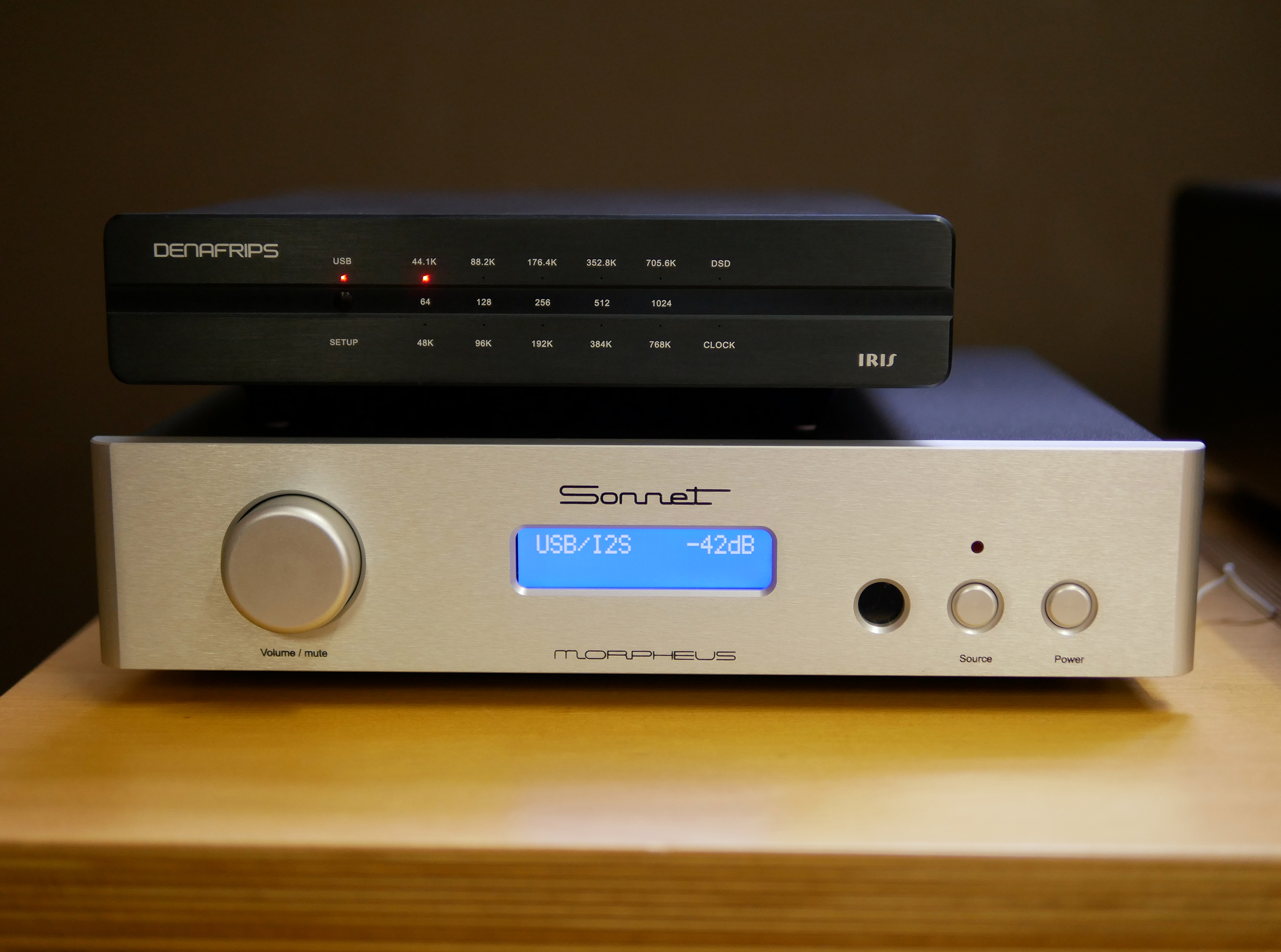
Being a curious fellow, coupled with the fact I was also sent a custom cable to make this possible, I put the overachieving Denafrips IRIS DDC (review) into play, using a Raspberry Pi 4 as Roon endpoint (running RoPieee). Connectivity wise, we’re talking about Ethernet into the Pi, USB out and into the IRIS, then I2 into the Morpheus, which was once again connected to the Parasound JC 5/Sonus Faber combo. Yikes! That was my first thought after firing this setup, up. Yikes! Now, with the IRIS in play, the sound image opened up to let in more air, light, and space. And as Sun Ra reminds us, space is the place.
Sticking with DJ Logic and “Miles Away”, I was now hearing even more of everything because the sound image was spread out into a giant, but stable, mass of energy. I would also say that the IRIS brought even greater delicacy to the music presentation, so that even very subtle musical cues were superbly delineated. Think ripe. Which brings us back to the hardware or connectivity question. And I would say that both are important, and I2S is the preferable connectivity solution if you have that option.
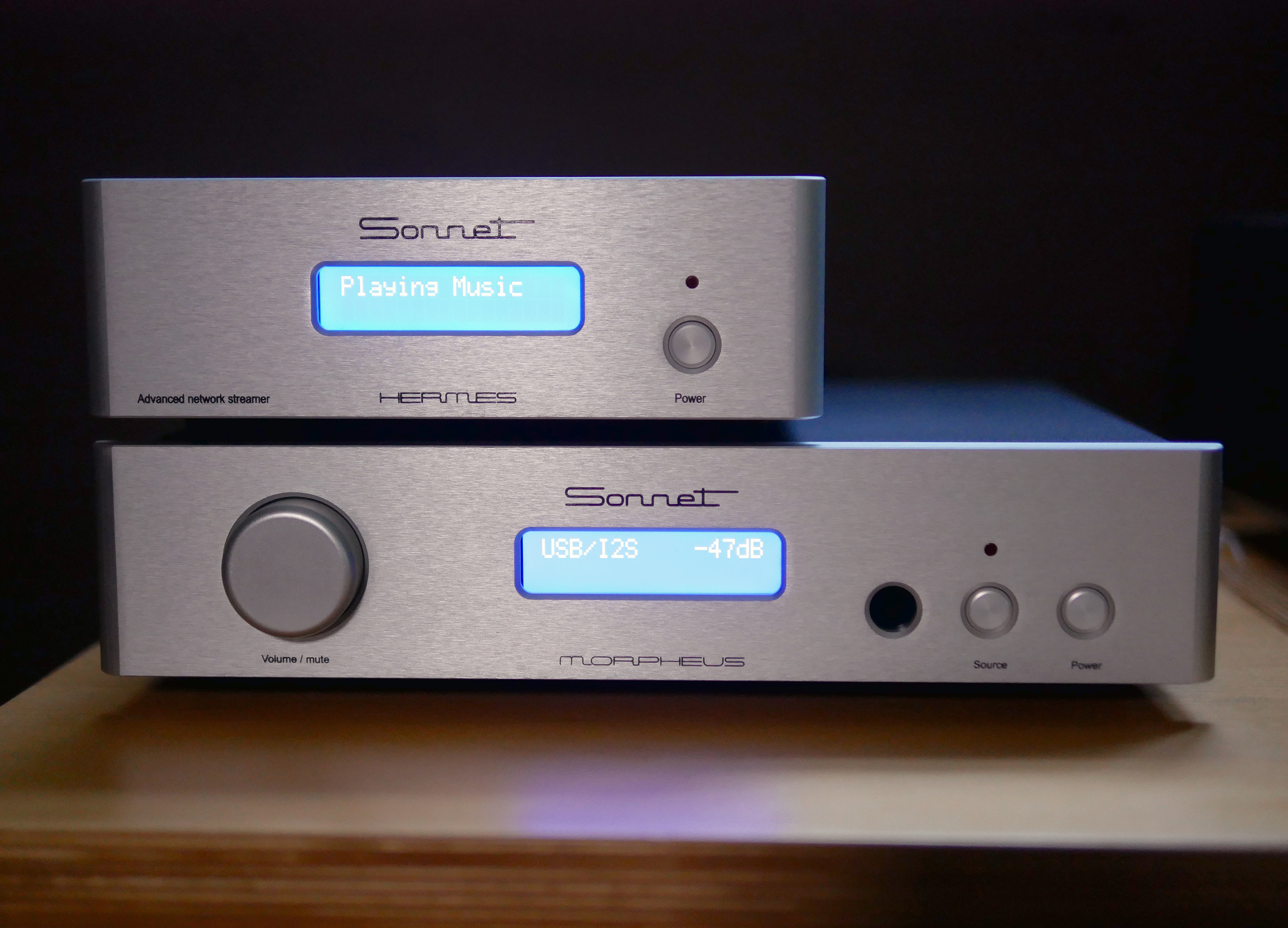
Supremely Dreamy
According to Ovid “no other is more skilled than [Morpheus] in representing … the speech of men…” It’s an easy step to replace Ovid’s “speech” with “sound” and “men” with “music” and say that the Sonnet Morpheus DAC is very skilled at representing music in about as a full a voice as I’ve heard from digital replay. To get the best from Morpheus, I2S is certainly the way to go, whether pairing it with the Sonnet Hermes or Denafrips IRIS DDC. Very well done!

Sonnet Morpheus DAC
Price: $3,399.00
Specifications
Balanced Non oversampling DAC
Two SDA-2 dac modules per channel in differential mode
Power supply 15VA 110/115V AC 220/230V AC 60/50Hz. Power required max 8 Watts
Input 1x optical, 1x coaxial and 1x AES/EBU and USB
Output 1x stereo pair single ended 2 Volts RMS
Output 1x stereo pair XLR balanced 4 Volts RMS
Recommended gain of used power amp in variable gain mode 22 – 26dB!
Frequency Response 44.1 kHz sampling 1Hz – 20 khz -2.5 dB
Frequency Response 192 kHz sampling 1Hz – 65 kHz – 3dB and 384kHz (USB)
Distortion 0.004% THD
Channel separation 120dB
Noise Floor -155 dB related to 2 Volt RMS
Output impedance RCA 100 Ohm, XLR 100 Ohm
Sampling rate Optical 44.1 – 96 kHz
Sampling rate Coax and AES/EBU: 44.1 -192 kHz
Sampling rate USB: 44.1 – 384kHz
Sonnet Hermes Digital Bridge
Price: $1,199.00
Specifications
Working principle: Linux based ROON end point using precision clocks
Power supply: 10 VA. Power consumption: Standby < 1 Watt. Full operation max 6 Watts
Power requirement: 110-230 V AC 60/50Hz
Inputs: Lan (local area network) max. 100 Mbps
Outputs: 1x optical Toslink, 1x RCA coax, 1x AES/EBU and I2S.
Sampling frequency:
Optical : 44.1 – 96 kHz sampling
Coaxial: 44.1 – 192 kHz sampling
I2S: 44.1- 192 kHz sampling. Max cable length in case of UTP CAT5e 20 meters
Dimensions (H x W x D): 19 x 6 x 25 cm.
Weight: 2500 gram
Company Website: Sonnet Digital Audio
US Distributor’s Website: Audio Art Cable

